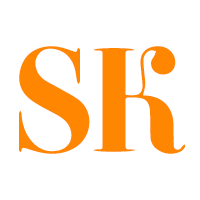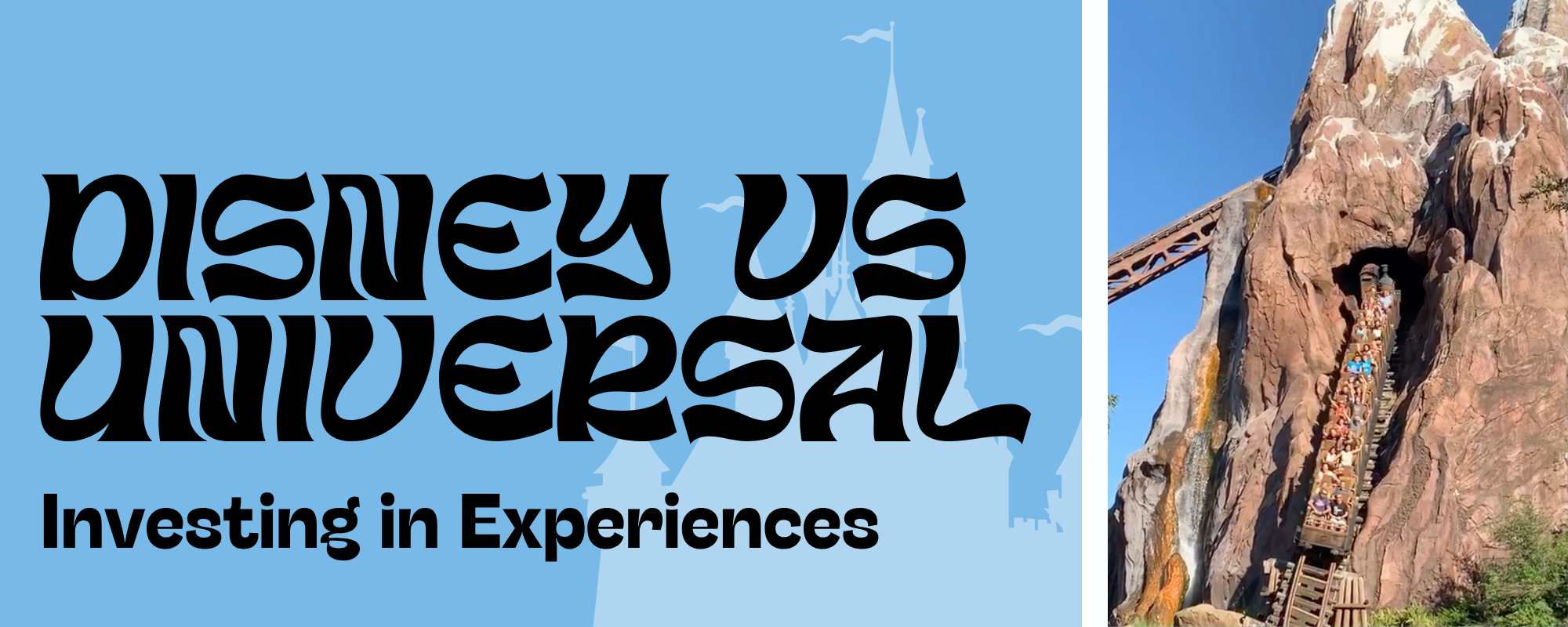Disney & Universal Are Battling through an Investment in Designed Experiences
When I tell people my big vacation plans year after year revolve around amusement parks, they often respond by telling me that theme parks are not for them. They find them too crowded and expensive.
And I get it. Even as a full theme park nerd, I’ve been there.
I’ve been in hot, crowded lines with wiggly, impatient children in hand waiting to overpay for a bottle of water and an excessively salty bag of popcorn.
So why do I do it? Why do I go back year after year to Walt Disney World, Universal Studios, Dollywood, and other amusement parks?
Because I see it. I see the magic. The magic in Design.
The heads of big companies see it too. They're going all in on UX and Design, and seeing magical returns on their investment. They need designers to lead this magic.
Investing in the Magic of Design
In 2024, the Disney Experiences division (also known as Disney Parks) alone generated revenue of nearly $34.2 billion (Satisia, 2024). Disney is a few years into its 10-year $60 billion investment in its parks, resorts, and cruise lines. And Disney announced a seventh world park to open in Abu Dhabi.
Meanwhile, Universal has just opened its newest theme park, Epic Universe. Epic is set to generate $2 billion in its first year of operation (CNBC, 2025) by designing elaborate worlds about fan-beloved properties like Super Mario and Universal Monsters. Universal has announced its next park, set to open in Bedford, UK.
These companies also have investments in moviemaking, toys, streaming services, and so much more. However, their investments in theme parks stick out for a major reason: design.
These two companies are battling for destination dominance through design. Competing against each other in who can deliver powerful experiences and memories to their customers. And I’m ready for it.
Theme parks have always had a relevant relationship with design because they offer a truly all-encompassing experience. There are just so many delightfully fun details and layers of design to consider.
How do you design the experience of welcoming people to the park? How do you design the way people enjoy the food you serve? Of course, what about the rides they ride? And wait in the lines they wait in? (I have an exceptionally nerdy love for queue design.)
Again, there are so many delightful, fun details just waiting to be designed. Let’s look at one aspect where design makes a noticeable difference: roller coasters.
Design Magic and Rollercoasters
Many people are within a day's drive of Six Flags. Each Six Flags park has a decent number of roller coasters. Most of their roller coasters are decently thrilling and often feature a major IP, such as Superman or Batman.
Their rollercoaster theming is typically achieved through simple coloring of the metal structures and basic logos and branding. You see the ride structure, wait outside in a partially covered queue under the ride beams, and leave with a story of how you conquered the coaster.
Now contrast that with Disney.
Disney has design principles around their roller coasters. Principles that ground every ride in something not typically considered in roller coasters, storytelling.
For example, there has to be a reason it's a coaster. Just it being a coaster is not enough. If it looks like a coaster like the Slinky Dog Dash, then it’s because you’ve shrunk down to the size of a toy and you’re riding the coaster your beloved kid made for you to ride.
Are you getting on a train-style coaster? Then look at my favorite rollercoaster, Expedition Everest. You’re not riding a rollercoaster, you’re on an exploration trek gone wrong because a giant Yeti has ripped up your track, and now you’re speeding along the mountain on a daring escape.
Every coaster has a story-driven cause behind it. It’s not just delivering a rollercoaster for you to ride, it's designing a thrilling adventure for you to experience.
You don’t go home that day and say I rode this awesome ride. You say, today, I escaped a Yeti!
It’s a difference in value. Disney highly values storytelling. It’s the DNA of their company.
From an investment standpoint, this pays off for Disney time and time again.
When you invest your time and resources in figuring out the hard stuff, like great design and storytelling, you gain an advantage over your competitors. You put design at the beginning of the development process.
Disney didn’t just literally make a ride and then ask their designers to make the rollercoaster look pretty. (You hear how silly that sounds? You wouldn’t do that for your own products now, would you?)
And their competitors, Universal, figured that out too. Now, both companies are going toe to toe on the power of design against each other.
More Magical Examples
Disney, Universal, and other companies’ investment in design is only going to continue. And we can take clear lessons as to why your organization needs to be strategic with its investment in design, too.
We don’t need the same financial commitment at these large organizations to make a significant difference. We just need to start.
We can think of the ways our organizations keep true to our audience while providing them with new experiences centred around their needs and interests. We can go big on storytelling. We can and should go all in on design.
For example, here are some nerdy design things to consider…
How do we go all in on bringing design to life?
Epic is delighting new audiences with their incredible animatronic dragons. Creating what may be their best themed land yet.
How do we carve out a competitive advantage by finding an audience waiting to be served?
Disney’s Skipper Cantina keeps the puns but elevates flavor in a way that targets foodies and goes beyond the basic chicken tender.
How do we design new experiences in a world of everything on major Intellectual Properties (IP)?
Balancing the creation of new, original classics like my favorite, The Haunted Mansion, when everything is now so IP-driven.
How do we create a 360-degree world in both the physical and digital worlds?
We can translate world-building ideas, such as Walt’s Hub and Spoke design, into digital experiences.
What do you find in your Goldilocks design investment?
Let’s look at theme park hotels. Design too little and you’re just another hotel. Too much and you’re the late Star Wars Hotel: the Halcyon Galactic Starcruiser. Just right gives us Universal’s Cabana Bay and Disney’s Animal Kingdom Lodge.
How do we tailor our core offer to different cultures?
Universal Studios Japan, Tokyo DisneySea, Disneyland Paris, and Disney’s Alunai have all adapted the culture of their surroundings for the better through thoughtful research and iteration.
How do we translate our experience into new mediums?
Lego took its focused experience of families building things together into its creative Legoland parks and resorts.
All of these are examples of the awesome (and very fun) magical powers of design.
The Future of Jobs Report 2025 by the World Economic Forum reported that UX/UI designer as the 8th fastest-growing job by 2030. So companies all over are looking to increase their investment in design to uncover their own magical potential.
And you can lead them in that investment. You can lead your organization in the magic of being more creative and strategic in understanding what is truly valuable to your users. How fun is that? :)

